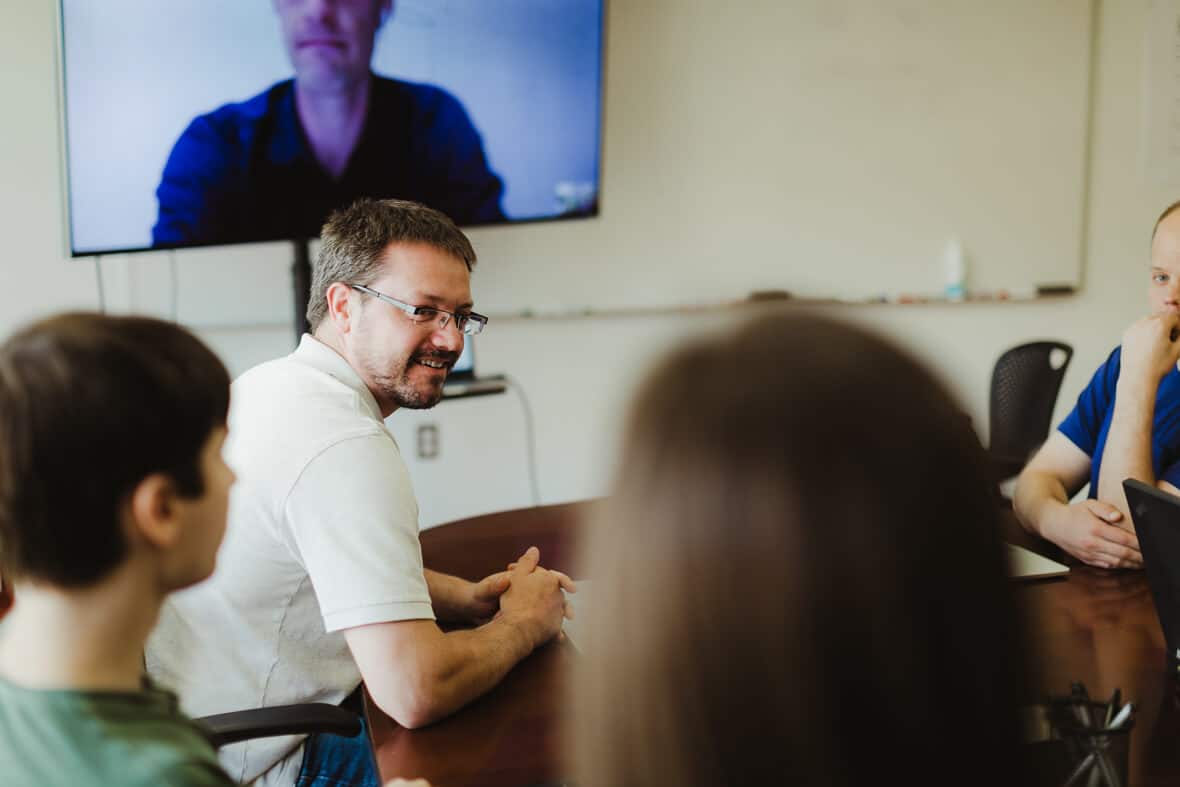If you were to google how to facilitate a remote workshop, you’d find a lot of articles on which tools to use and even some opinions that you shouldn’t host a remote workshop at all.
How can you bring your superstar facilitation skills to the table and create a remote workshop experience that’s both enjoyable and valuable to the project? In this post, I’ll share my own recent experience on how I adapted an in-person, human-centered design workshop for a team that was halfway around the world.
1. Planning a Remote Workshop
Planning is critical for any human-centered design workshop, but especially for facilitating a remote workshop. My planning steps looked like this:
- Define the purpose and objectives of the workshop.
- Select the methods to reach those objectives, and determine how much time is needed for each method.
- Identify the people who are critical to reaching the objectives, and send them a calendar invitation to save the date–ideally 2-3 weeks in advance.
- Determine the tools needed to facilitate the workshop from afar. In my case, I chose Skype for Business (an Enterprise-accepted application for my client) and Mural (a collaborative online whiteboard).
- The week before, send a “what to expect” email with more information about the workshop. Include a list of anything attendees need to prepare in advance or supplies (canvases, whiteboard, markers, sticky notes) they will need.
My most recent workshop was a half-day for five people with two facilitators (one lead, one support).
2. Creating a Remote Workshop Agenda
This particular remote workshop used a tried-and-true persona design activity. The goal of the workshop was to understand how people performed a particular process today so that we could build a web application to support their needs. This involved four activities:
- Persona Map – To capture our persona, who they are, what they do, and what their strengths are
- Empathy Map – To uncover the ambitions, anxieties, activities, and attitudes of our persona
- Journey Map – To visualize the current workflow, the people, and the tools that are critical for making the experience work
- Rose, Bud, Thorn – To identify the greatest opportunities to create value given the current process
Our goal was to develop two personas in the remote workshop. This meant creating two empathy maps, and ideally four journey maps of current processes (two different jobs for each persona).
3. Just-In-Time Prep
In preparation for the workshop, I walked through the activities and timing a day or two before. I focused on the specifics of how I would facilitate a half-day remote workshop, along with the canvases I needed to capture the outcomes. I also began setting up my Mural workspace for the workshop.
There are two ways I could have facilitated this session:
Option A
Split the participants into two teams to work through the agenda and share out to the group after each activity.
- Benefits: more time for each activity and, as a result, greater participation because the groups are smaller
- Disadvantages: more complex to facilitate since the facilitators might need to be in different rooms and call into a shared conference line to share out with the group
Option B
Facilitate the workshop as one group, moving through the process twice, but all together.
- Benefits: the advantage of group-think, no need to share out after each activity, and the ability to use a single conference line for the full workshop
- Disadvantages: possible lack of participation due to a larger group, people talking over each other, and difficulty hearing on the other end
I went with Option B, facilitating the workshop as one group.
The Outcome
Despite the possible disadvantages and multiple places for technology to fail us, facilitating a remote workshop went pretty well. We acknowledged the potential awkwardness of a remote workshop at the top of the call to put everyone at ease. We then proceeded to facilitate the workshop as closely as possible to the way we would have run it in-person.
What we learned for next time…
- One facilitator took the lead of the working canvas in Mural for the group, while the other took notes throughout the workshop. Both facilitators engaged in conversation, interjecting to ask clarifying questions or confirming understanding.
- We encouraged one conversation at a time so we could hear each other clearly. This was imperative to taking good notes and capturing observations from the group.
- Voice quality made it really difficult, even with one conversation. No tool seems to do a great job of this. If possible, I’d like to try having everyone log in individually instead of using a single conference room phone in hopes that the voice quality would improve.
- It took twice as long to get through each activity. We could have adjusted for half the amount of activities. Instead, we took the teaching opportunity and gave the team the tools to go through the same process a second time on their own. The results were great, and now we have HCD advocates who have experience doing design thinking activities!
Without a team on the other end who is knowledgeable, engaged, and eager to contribute and collaborate, this kind of activity would not be possible. Facilitating a remote workshop is not my first choice. However, I now believe it can be done and produce valuable project outcomes.

